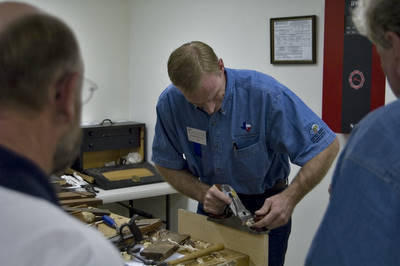Oops, looks like I missed an issue or two. No worries, I will refund all subscriptions fees for the past two months. I was too fat and bloated from the holidays to reach my keyboard, but I am back now.
This installment is designed to make you paranoid as I am discussing, once again, Scammers and Spammers.
Oh, and of some note, I have changed my name and web site. Crucible Design has been moth-balled, my new and improved business name is James Fryer Design Services. My new web site is JamesFryer.com. And accordingly, I have a new email address: jfryer@jamesfryer.com.
This month’s Main Feature was prompted by yet another piece of spam I recievied:
There are many ways to make money, some less honest then others. One of these ‘less honest’ ways involves companies representing themselves as some ‘official’ Internet source and trying to scare people into paying several hundred dollars a year for flimsy (and unnecessary) services. Here is one of the more benign examples: I received a fax the other day from “Official Internet Registry & Optimization Bureau” warning me that, “Major search engines may not be able to prioritize content on your site…” And it starts off with, “Forward to Accounts Payable” in large text. Why this sounds like a scam:
- The name, there is not government mandated Bureau of Internet Registry & Optimization
- The company logo is made to look like and official government seal, but it is not
- It came to me as fax spam, no legitimate company uses this ‘marketing’ technique
I call this one rather benign because the fax does state in a couple of places that the service is not mandatory. But there are far more aggressive scammers out there that might contact you by fax, email, or telephone trying to convince you that there is some critical service you are missing. They may try to scam you into paying exorbitant rates for anything from Domain Registration to SEO. But they may also be interested in steeling away your domain name. So hang up the phone, throw out the fax, or delete the email. If you are concerned about the renewal of some service, call me or call the company with whom you have registared your Domain Name. Go straight to the source.
Every month (or so) the Crucible Design Newsletter will endeavor to enlighten you on issues relevant to your web site, the Internet, and related issues. The goal of this newsletter is to offer new tools, or new ways to use tools, to increases your effectiveness in the way you use the Internet and the computer.
Scammers and Spammers
Identity thieves can some times get some of your personal data, but not enough to do anything with. But they will use it when the contact you to convince you that they are someone that they are not, like your bank or credit card agency. For instance, a thief may have gotten your name and the last four digits of your credit card from a discarded reciept and looked up your phone number online, or the phonebook. Then they will call you pretending to be your credit card company and ‘prove it’ by giving you this data to ‘confirm’ their legitimacy. Once you are on their hook, they will ask for another piece of information from you, like the rest of your card number or the expiration date to ‘confirm’ that they are speaking to ‘the real you’. If you proceed to give them this information, you have completed their objective and they can now use your card, or open a line of credit, or any number of nefarious things that you will not like.
To avoid this, don’t give any information to someone who is calling you claiming to be your bank or credit card agency. If it is a legitimate call, tell the person that you will call them back, then call the institution on their main number and either continue the business they had with you, or report that there is potential fraudulent activity on your account. The same principle applies to email correspondence. If you get an email that you are unsure of, go to that companies web site and see if there are any problems.
But do not click on any links in that email, they may look OK, but they may take you to a fraudulent web site.
This is an old scam that predates the Internet. And it is not limited to financial institutions, a thief might pose as your cable, phone, utility, or some other vendor company to get more information about you to use for their own ends.
I am not trying to make you paranoid, but I probably did, sorry. If you think you might be the victim of fraud or identity theft, you can put either a three month, or seven year fraud alert on you credit profile with the three major Credit Bureaus. And here they are:
EquifaxDirect Line for reporting suspected fraud: 800-525-6285
Fraud Division
P.O. Box 740250
Atlanta, GA 30374
800-685-1111 / 888-766-0008
www.equifax.comExperianDirect Line for reporting suspected fraud: 888-397-3742
Credit Fraud Center
P.O. Box 1017
Allen, TX 75013
888-EXPERIAN (888-397-3742)
www.experian.comTrans UnionDirect Line for reporting suspected fraud: 800-680-7289
Fraud Victim Assistance Department
P.O. Box 6790
Fullerton, CA 92634
Phone: 800-916-8800 / 800-680-7289
www.transunion.comThe GoogleGoogle Analytics is a free Google product that tracks detailed usage statistics of a web site. It lets you see information about who is looking at your site and how they are looking at it. It does not give you the name and address of a visitor, but it does tell you their city or town. It also offers details about their computer including the web browser, Operating System, screen size, etc… Two of the more valuable metrics are referral sources and key word usage. Referral sources tells you where your visitor is coming from, whether the be from Google, or a colleague’s web site. Key words are what your visitors are typing into a search engine that results in finding your web site.
It is also integrated with AdWords, Google’s paid advertising service, so you can closely track where your ad money is going.
It is an extremely powerful tool, but be warned, it is not terribly friendly to the uninitiated. It is a professional tool, and unless you are willing to roll your sleeves up and get your hands dirty, it will mostly just confound you. But that should not make you feel bad, I use it sporadically and it frequently confounds me.
Recommended SiteThe Dilbert Blog: I thought you all might need some diversion after my little paranoia rift. Actually, the Dilbert Blog is often rather intelligent, but also rather funny, or disturbing, sometimes all three. Scott Adams is one of those people that is so smart it sometimes makes me wonder why I bother getting out of bed in the morning. I hate smart people, that is why I married one, to bring her down. Didn’t really work out that way though, she has me pretty much wrapped around her little figure. Which is a rather good trick as her little figure is really very little and I am not. Anyway,
dilbert.com is also great, that is where the daily dilbert strip can be found, as well as old strips. If you have not read Dilbert before, it is not just for geeks, anyone who has worked (or visited) corporate America can appreciate Scott’s insights.
What is CSS anyway?Casscading Style Sheets is a web technology that goes hand in hand with HTML. CSS is a method of applying style to a web page. That style can include many things including font, font size, font color, positioning of elements on the page, page color, element color, etc… In the old days of web site development, the ’style’ of an HTML page was limited and rather painstaking to declare. CSS adds many new formatting and styling options and makes is more simple to implement. It allows for the style of the web site to be controlled from a separate document. The advantage to this is that updating that separate CSS document effects all the pages in the site and saves the developer from having to update each HTML page individually.
Here are two examples of the same web page,
This One has a CSS file attached to it,
This One does not. See the difference? The page is the same, but with and without CSS applied.
 There is no lead paint in these toys (unless you add it yourself) and they are all 100% made in the USA (unless you live outside the USA). Steven Caney's Toy Book
There is no lead paint in these toys (unless you add it yourself) and they are all 100% made in the USA (unless you live outside the USA). Steven Caney's Toy Book introduces your child to the world beyond prefabricated 'play modes'. If you don't like the idea of you child becoming a mindless automaton in a consumerist society, show him/her a world of his/her own making.
and Steven Caney's Ultimate Building Book.







